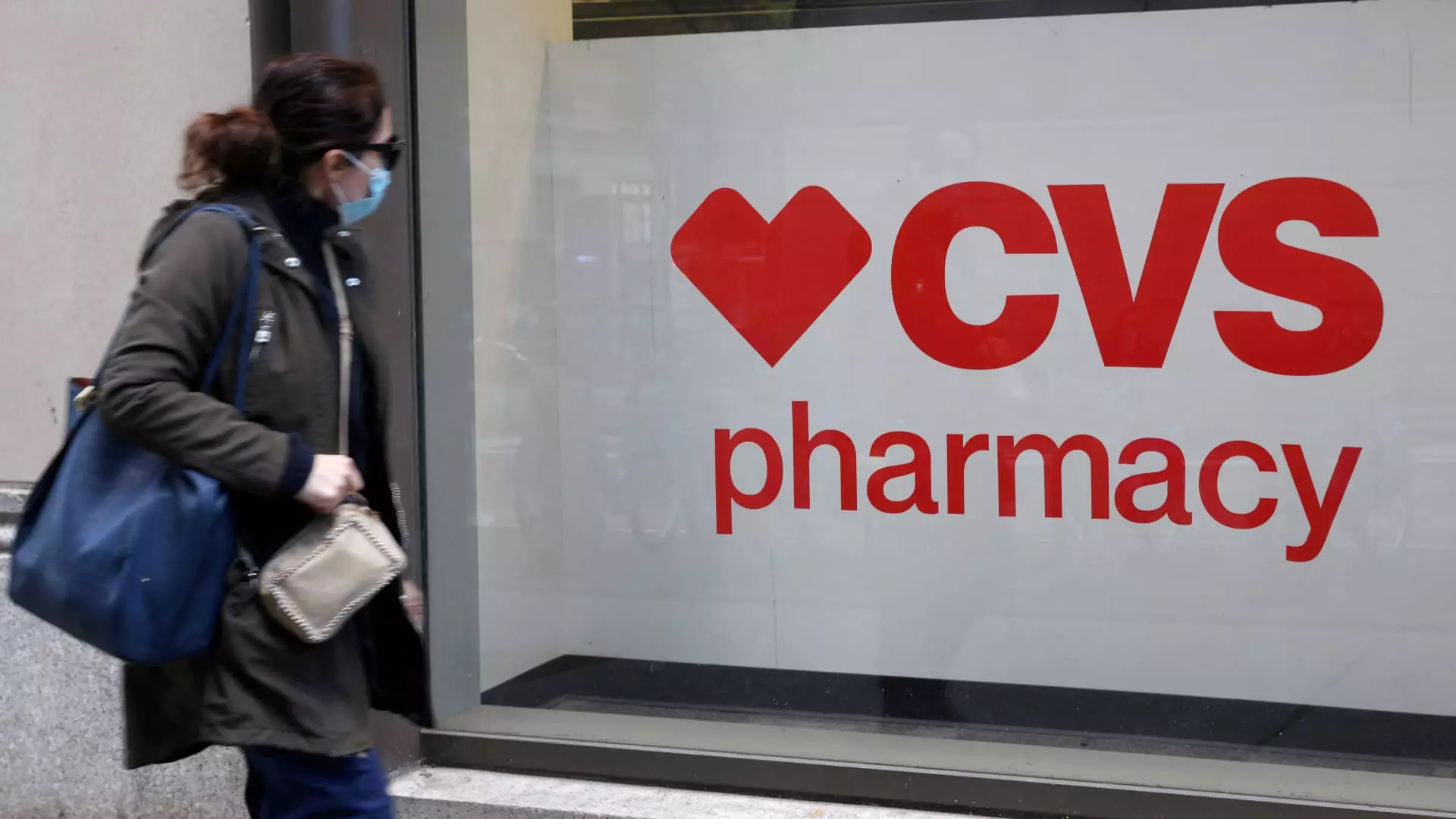CVS Health recently reported first-quarter revenue and adjusted earnings that fell short of expectations, leading to a significant drop in share price. The company cut its full-year profit forecast due to higher medical costs impacting the U.S. insurance industry. The main factor contributing to this setback is increased pressure on medical costs within CVS’s insurance business, particularly in its Medicare Advantage segment.
Following the disappointing results, CVS’s stock plunged nearly 18%, marking one of its worst days in over a decade. The company revised its 2024 adjusted earnings forecast to at least $7 per share, down from the previous guidance of $8.30 per share. Analysts were expecting full-year adjusted profit of $8.28 per share, highlighting a gap in performance. The unadjusted earnings guidance was also reduced to at least $5.64 per share, down from at least $7.06 per share, indicating a challenging outlook for CVS’s financials.
The rise in medical costs, especially in the Medicare Advantage segment, is a key factor contributing to CVS’s financial struggles. The resurgence of patient procedures that were postponed during the pandemic, such as joint and hip replacements, has led to increased expenses for insurers like Humana and UnitedHealth Group. Medicare Advantage plans cover over half of all Medicare beneficiaries, making it a critical growth area for the insurance industry. However, escalating costs associated with these plans have raised concerns among investors.
CVS’s CEO, Karen Lynch, acknowledged the utilization pressure in the Medicare Advantage business, with outpatient services and supplemental benefits exceeding projections. The company is committed to improving its margins in this segment. Chief Financial Officer Thomas Cowhey highlighted challenges related to government reimbursement rates for Medicare Advantage plans, complicating the financial outlook for CVS. Despite these obstacles, CVS aims to enhance its performance and adapt to the changing landscape of the health insurance industry.
In the first quarter, CVS reported earnings per share of $1.31 adjusted, lower than the expected $1.69, and revenue of $88.44 billion, missing the $89.21 billion estimate. The company’s net income and sales demonstrated a decline compared to the previous year, reflecting the impact of rising medical costs and operational challenges. CVS’s health services segment, including the pharmacy benefit manager Caremark, experienced a decline in sales due to losing a significant client. Market dynamics, such as Tyson Foods and Blue Shield of California opting for alternative partners, have added to the competitive pressure in the industry.
As CVS aims to transition from a traditional drugstore chain to a prominent health-care entity, recent acquisitions of health-care providers signify a strategic shift in its business model. The company’s health insurance segment generated substantial revenue growth, driven by plans offered by Aetna. Despite revenue growth, CVS’s health services division faced operational challenges, leading to a drop in revenue. The company’s strategic acquisitions and partnerships reflect its commitment to expanding its presence in the health-care sector and adapting to evolving market demands.
CVS Health’s recent financial performance underscores the challenges facing the health insurance industry, particularly in the Medicare Advantage segment. The company’s efforts to navigate increasing medical costs and operational hurdles will be crucial in sustaining its financial health and long-term growth prospects. As CVS continues its transformation into a comprehensive health-care provider, strategic initiatives and prudent financial management will play a vital role in overcoming industry challenges and positioning the company for future success.


Leave a Reply